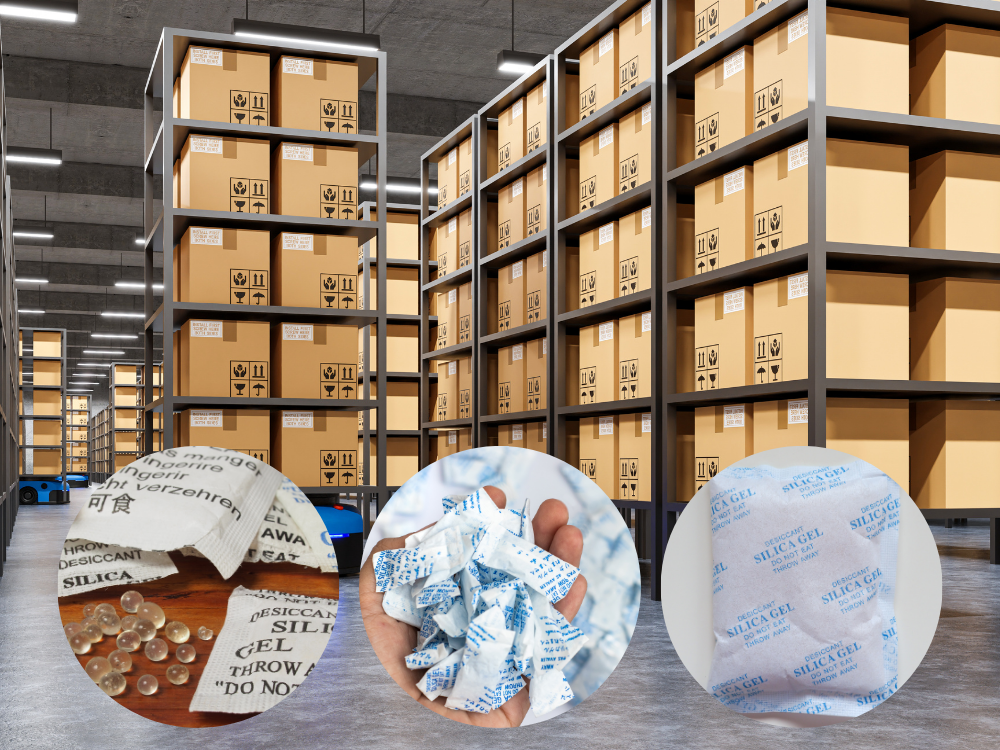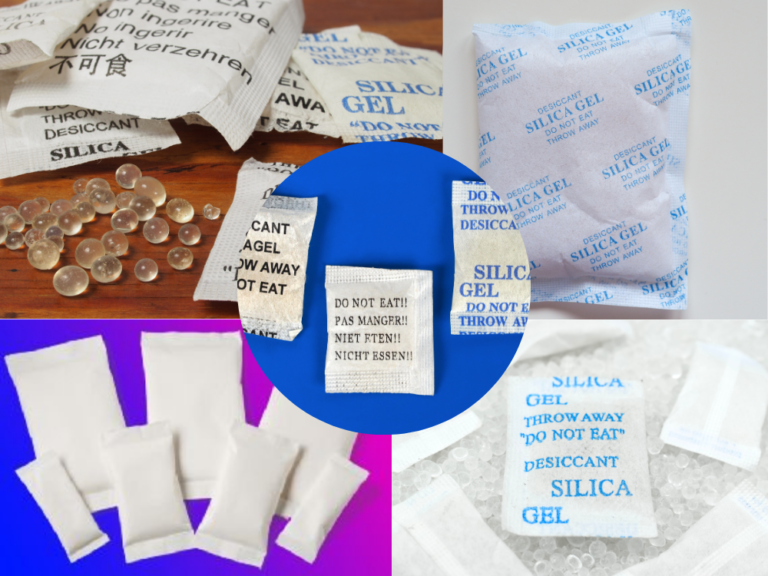Proper packaging and storage are crucial for maintaining the quality and integrity of products. One of the most effective ways to protect goods from moisture damage is by using desiccants. This blog provides a comprehensive guide on how to package and store products with desiccants to ensure optimal preservation and quality.

Understanding Desiccants: Desiccants are materials that absorb moisture from the air, reducing humidity levels in their surroundings. Common types of desiccants include silica gel, clay, and molecular sieves. These materials are often used in packaging to protect products from moisture-related damage such as mold, mildew, corrosion, and spoilage.
Step-by-Step Guide to Packaging with Desiccants:
- Choose the Right Desiccant:
- Silica Gel: Ideal for general moisture control, often used in electronics, pharmaceuticals, and food packaging.
- Clay Desiccants: Cost-effective and suitable for a wide range of applications, including industrial goods.
- Molecular Sieves: Highly efficient at low humidity levels, used for sensitive products like electronics and chemicals.
- Calculate the Required Amount:
- Determine the volume of the packaging and the nature of the product to calculate the required amount of desiccant. Factors such as the type of desiccant, the expected duration of storage, and the ambient humidity should be considered.
- Prepare the Packaging:
- Ensure that the packaging material is moisture-resistant. Common choices include aluminum foil, polyethylene bags, and vacuum-sealed bags.
- Clean and dry the products thoroughly before packaging to prevent any pre-existing moisture from being sealed in.
- Insert the Desiccants:
- Place the appropriate amount of desiccant inside the packaging. For large packages, distribute desiccant packets evenly to ensure uniform moisture absorption.
- For smaller items or delicate products, consider using desiccant packets or sachets that can be placed directly inside the product packaging.
- Seal the Packaging:
- Ensure the packaging is airtight to prevent moisture ingress. Use heat sealers or vacuum sealing machines for best results.
- Double-check seals to ensure there are no gaps or leaks that could allow moisture to enter.
Storing Products with Desiccants:
- Choose an Appropriate Storage Location:
- Store packaged products in a cool, dry place away from direct sunlight, which can increase temperatures and potentially degrade both the product and the desiccant.
- Monitor Humidity Levels:
- Use hygrometers to monitor humidity levels in storage areas. Maintaining a low-humidity environment helps extend the effectiveness of desiccants and ensures the longevity of stored products.
- Regularly Check Desiccant Saturation:
- Inspect desiccant packets periodically. Some desiccants, like silica gel, change color when saturated (e.g., from orange to green). Replace or regenerate desiccants as needed to maintain moisture protection.
- Organize Storage Systematically:
- Use a first-in, first-out (FIFO) system to manage inventory. This practice ensures that older stock is used before newer stock, reducing the risk of product degradation over time.
Conclusion: Packaging and storing products with desiccants is a simple yet highly effective method to protect against moisture damage. By selecting the right desiccant, calculating the appropriate amount, and ensuring airtight packaging and proper storage conditions, you can maintain the quality and integrity of your products. For optimal results, consider using high-quality desiccants from trusted suppliers like DryTec Industries Pvt. Ltd. to ensure your products remain in perfect condition throughout their storage and transportation journey.






